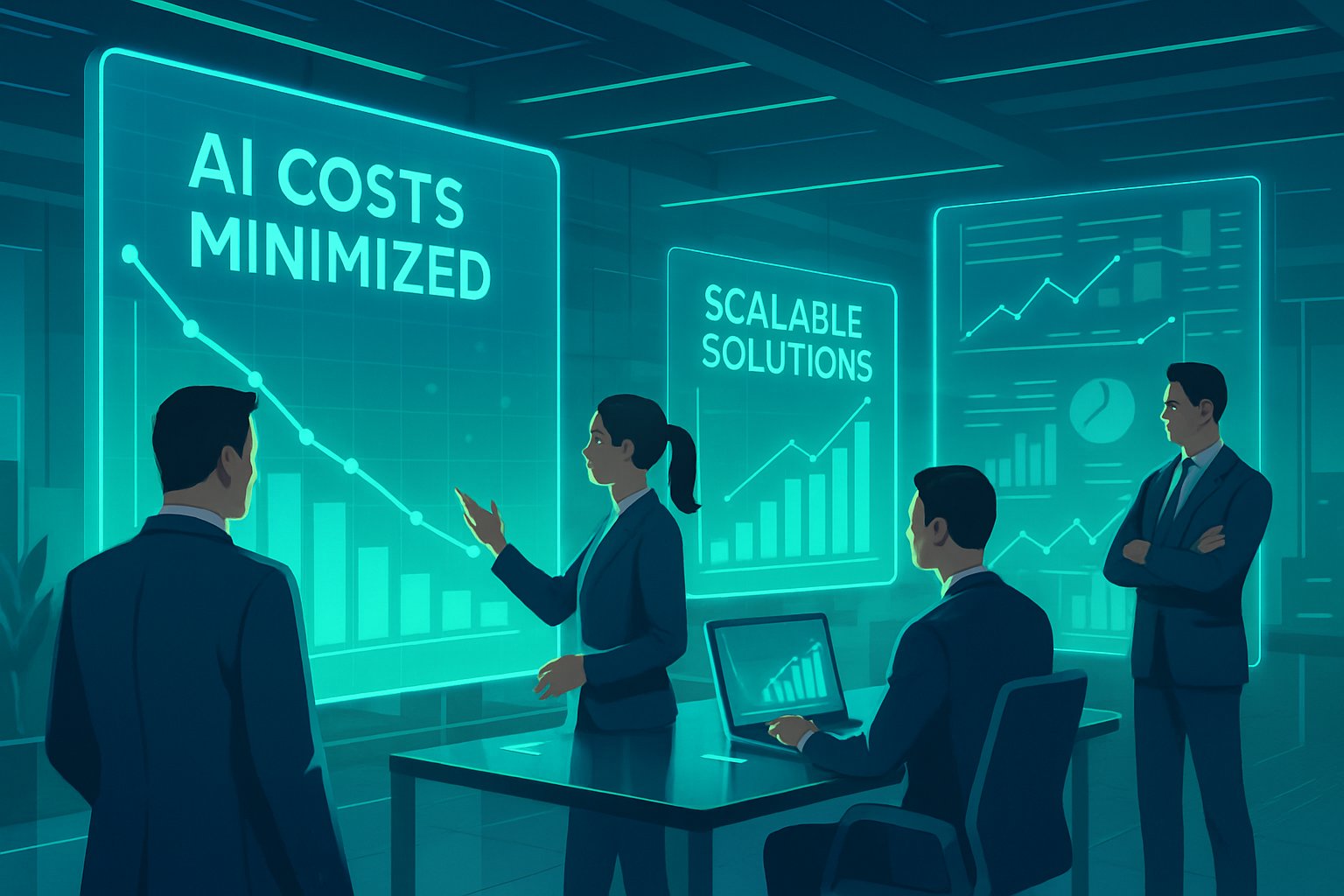
AI CERTS
31 minutes ago
Grok 4.1 Fast Redefines AI Cost Optimization
The launch also debuts an Agent Tools API that handles search, code, and file orchestration. Therefore, engineering teams can focus on product logic, not infrastructure plumbing. This article unpacks the announcement, compares costs, and presents pragmatic strategies for sustainable scaling.
Pricing Disrupts Token Budgets
xAI published clear input token pricing that undercuts many rivals. Uncached tokens cost $0.20 per million, while $0.50 output tokens remain competitive for large answers. Meanwhile, cached $0.05 rates reward applications that reuse context intelligently. Such granularity empowers deeper AI cost optimization during workload planning.

The headline numbers translate into tangible savings across typical scenarios:
- Long document analysis: 2M tokens processed for $0.40 input when uncached.
- Chat agent with caching: 50% repeated context reduces cost to $0.10.
- Research bot replies: average 50K generation costs only $0.025 via $0.50 output.
Consequently, Grok’s model economics rival tiered discounts from established providers. These figures frame the broader discussion on budget friendly frontier compute. Pricing alone offers clear leverage. However, context capacity further shifts architectural assumptions, as the next section explains.
Context Window Unlocks Scale
Grok 4.1 Fast processes an unprecedented two million tokens per request. Moreover, the window supports mixed modalities, extensive logs, or entire codebases in one call. Developers can therefore avoid costly chunking logic, advancing AI cost optimization goals.
In contrast, most competitors offer 200K to 1M, which shifts frontier model economics toward xAI’s favor. Additionally, fewer requests mean reduced authentication overhead, network latency, and billing rows. Consequently, accuracy improves because prompts hold full context rather than truncated excerpts.
The vast window widens design space. Subsequently, teams rethink retrieval patterns, paving way for smarter tool integration.
Agent Tools Reduce Overhead
xAI bundles server-side web browse, code execution, X search, and file search. Furthermore, the Agent Tools API enforces safety sandboxes and logs invocations for cost tracking. Tool calls are free until December 3, allowing immediate experiments without jeopardizing AI cost optimization targets.
After the trial, charges resume as follows:
- Tool invocation: $5 per 1,000 successful calls.
- Live search: $25 per 1,000 sources retrieved.
- Caching: still eligible for cached $0.05 input discount.
Therefore, accurate forecasting must include tool mix, not only tokens. Nevertheless, outsourcing execution simplifies compliance reviews and shortens deployment cycles. Integrated tools shrink operational friction. Yet price comparisons demand a broader frontier model economics view, explored next.
Frontier Model Economics Compared
Industry watchers quickly plotted Grok against GPT-5.1, Gemini 3 Pro, and Claude Sonnet. VentureBeat shows Grok’s $0.20 input sits far below several rivals charging $1.00 or more. These deltas create powerful AI cost optimization levers for budget conscious teams.
Moreover, Grok’s $0.50 output rate halves some premium tiers elsewhere. The calculus changes further when accounting for cached $0.05 discounts, absent from many incumbent offerings. Consequently, Grok often wins batch summarization and long retrieval workloads on total dollars. However, competitors tout stronger tooling ecosystems, less volatile branding, and mature compliance regimes.
Researchers also warn that company-supplied benchmarks may inflate claims. Independent testing will clarify throughput, latency, and hallucination rates under real enterprise accessibility constraints. Pricing leadership seems clear today. In contrast, adoption decisions still rest on trust and governance, leading to the next focus.
Enterprise Accessibility Factors Matter
Lower costs mean little if enterprises cannot onboard quickly. Furthermore, xAI markets FedRAMP roadmaps and GSA listings to boost enterprise accessibility. Dedicated support channels promise 99.9% uptime and regional failover.
Compliance evaluators still need SOC 2 reports, audit logs, and red-team transparency. Nevertheless, the generous context window simplifies data segmentation by reducing cross-request diffusion. This structural change advances AI cost optimization by containing token sprawl within single calls.
Partners like OpenRouter offer zero-cost trials, enhancing enterprise accessibility for pilot teams. Consequently, proof-of-concepts can reach decision makers before budgets freeze for fiscal reviews. Access pathways now align with pricing. Subsequently, implementation guidance becomes essential for unlocking maximum savings.
Implementation Tips For Savings
Teams should begin with a usage model spreadsheet before any code ships. Additionally, break down prompt layers, anticipated generations, and tool calls. Tag each segment with input token pricing, cached projections, and $0.50 output estimates. Include safety buffers, because user behavior often expands prompt sizes.
Subsequently, enable xAI’s explicit caching headers to capture the cached $0.05 rebate. Moreover, schedule nightly log analysis to detect drift that undermines AI cost optimization. For high-traffic endpoints, consider batched inference that pushes the 2M context to full capacity.
Engineers can validate skills through the AI Cloud Architect™ certification. Certification study guides include token budgeting labs aligned with frontier model economics. Practical diligence protects budgets. However, planning must culminate in decisive action, addressed in the final section.
Strategic Outlook And Action
Grok 4.1 Fast resets expectations for frontier performance and spend. Moreover, aggressive pricing collides perfectly with rising pressure for AI cost optimization. Enterprises that pilot now will capture knowledge earlier than slower competitors.
Nevertheless, due diligence on benchmarks, safety, and compliance remains mandatory. Independent audits will decide whether low rates translate into production-grade reliability. Consequently, stakeholders should establish review calendars tied to usage milestones.
In summary, Grok 4.1 Fast merges aggressive input token pricing with a record context window. Tool orchestration and transparent discounts further compress total expenditure. However, success hinges on monitoring real workloads and refining prompts continuously. Enterprises should pilot during the free period, gather metrics, and model year-long projections. Subsequently, they can formalize contracts when evidence supports sustained value. Professionals seeking credibility should pursue the AI Cloud Architect™ pathway. Act now to secure competitive advantage before next-generation models reset economics again.



